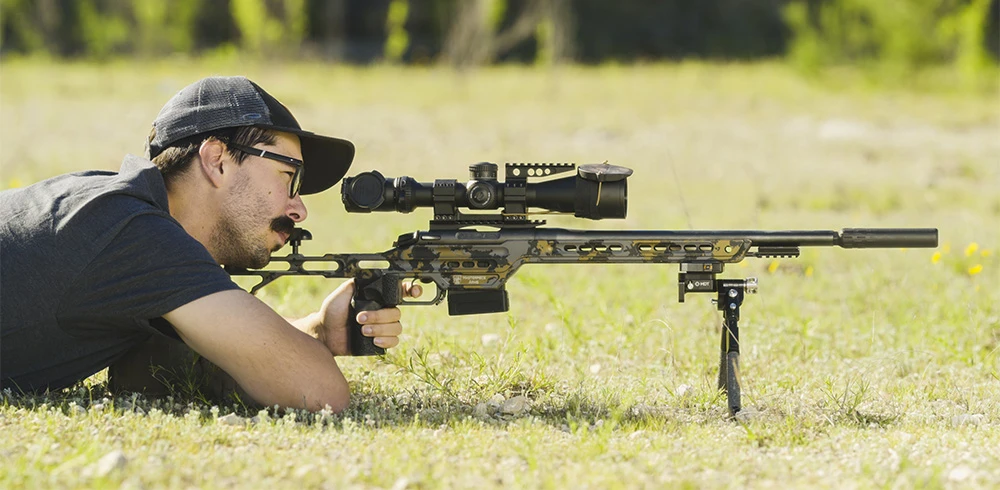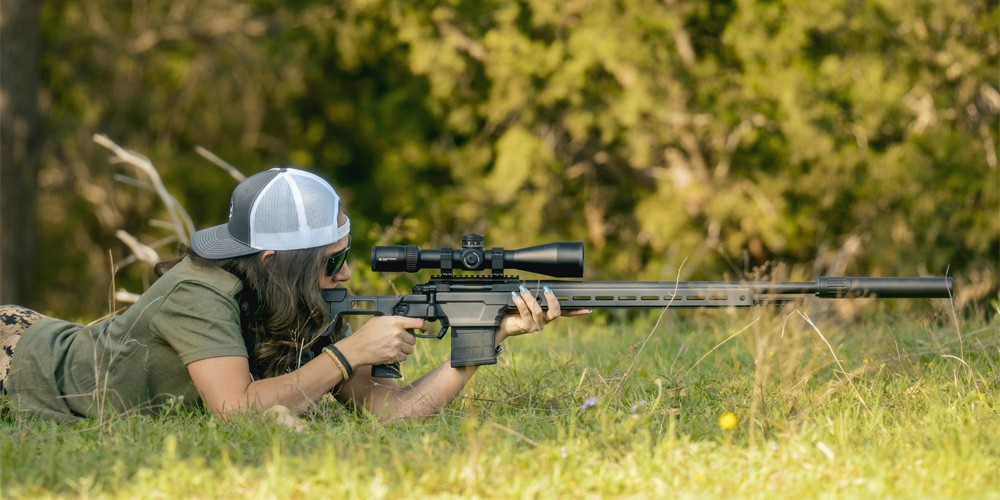

- Benefits of Subsonic Ammo: When paired with a suppressor, subsonic ammo dramatically lowers the sound of a gunshot to hearing-safe levels, enhancing the shooting experience while protecting hearing.
- Use Cases: Subsonic ammo is effective for hunting within a few hundred yards, competitions, and casual range shooting, providing a quieter and more comfortable shooting experience with less recoil.
- Top Subsonic Calibers: Popular subsonic calibers include .45 ACP, 9mm, .300 BLK, .22LR, .375 Raptor, and 8.6 BLK, each offering unique advantages for various shooting scenarios.
- Practical Tips: While subsonic ammo can be used without a suppressor, pairing it with one maximizes the noise reduction benefits. Ensure your firearm is properly adjusted to cycle subsonic rounds effectively.
Table of Contents
Whether you've already got your suppressor and want to get the most bang for your buck (or least bang, we guess), or you're just curious about subsonic ammo in general, we've got you covered.
There's a lot of confusion about subsonic ammo, so we want to set the record straight. There are a number of benefits to using subsonic ammo with your suppressor, and there are a few things to be aware of when shooting subsonic ammunition.
We will cover everything you need to know to get the most out of your suppressor, stay safe, and have a great time shooting. We'll start with the basics and technical stuff, then dive into some caliber recommendations and other helpful info.


Subsonic Ammo Overview
Subsonic ammo is a round that doesn't travel faster than the speed of sound. Most ammo types exceed this speed and break the sound barrier like a fighter jet.
The speed of sound at sea level is about 761 miles per hour or 1,100 feet per second, so anything slower than that is considered subsonic.
In terms of actual construction, almost all subsonic ammunition is manufactured using the same methods and materials as supersonic ammunition. The only difference is subsonic rounds use heavier and longer bullets to slow them down to subsonic velocities.
Subsonic ammo also uses lower powder charges, keeping velocities and pressures much lower than supersonic bullets.
Why Use Subsonic Ammo?
The primary use of subsonic ammo is to pair it with a suppressor to decrease the gun'sgun's sound dramatically. The two things that make up the deafening sound we hear when a gun fires are the rapid expansion of propellant gases and the supersonic crack of a bullet breaking the sound barrier.
A suppressor contains, slows, cools, and disperses propellant gases, reducing the gunshot'sgunshot's report. Subsonic rounds don't break the sound barrier and cause that dramatic cracking noise, which a suppressor can contain.
The best way to vastly lower the noise level to a hearing-safe volume is to combine a suppressor and subsonic ammo.


Using Subsonic Ammo with Suppressors
Because subsonic ammo is heavier and slower than supersonic ammo, you'll need to consider your use cases. For the most part, you can use them for everything you would use supersonic ammo for.
Hunting & Terminal Performance
Subsonic ammo can be a game changer for hunters, especially when taking shots within a couple of hundred yards, which is common in most states across the country. While the rounds are slower, they also have more mass, so you're still transferring a ton of energy to your target, especially at closer ranges.
Energy = mass x velocity. So even though we're reducing velocity by using a subsonic, we're increasing mass, which generally makes up the difference.
For those out on the plains hunting at 300 yards or more with any regularity, our hats are off to you for being able to make those shots ethically and reliably. You'll typically be better suited with supersonic ammo for those extended-range shots.
For the other 99% of hunters, the ability to protect your hearing by lowering the report of your shot to safe levels and hearing all the sounds of wildlife (including potentially dangerous animals) around you more than makes up for any downsides.
Ensure you're in one of the 41 states where you can legally hunt with a suppressor, as some states sadly don't allow it.


Competition
If you compete in any fashion, you're likely shooting quite a bit, so keeping your hearing safe is paramount. Hearing damage is cumulative.
A suppressor can keep your ears safe when you're shooting hundreds of rounds and are in the vicinity of other shooters doing the same. It is also possible that your ear protection slips off when running around a hectic stage. Suppressors will keep your hearing safe, keep you on target, and be more pleasant for others at the match.
If you're shooting PRS, where you're reaching 600 yards or more, subsonic ammo may not be the move just because you'll have more drop to compensate for. Many PRS pros still use suppressors for the sound and accuracy benefits even with supersonic ammo, however.
Precision shooting like PRS rimfire and NRL22, however, favors subsonic ammo. 22lr rimfire ammo is more accurate at a distance if you're shooting a subsonic round. This is because the bullet is so light that it tumbles when it hits the transonic zone and transitions between supersonic and subsonic — keeping the bullet subsonic throughout its flight results in a more consistent trajectory.
Plinking & Practice
Subsonic ammo is still a great option when you're just having some fun at the range or getting practice because it makes everything more comfortable for both the shooter and bystanders.
You'll also notice less recoil than with standard ammo, but other than that, it's business as usual here unless you're practicing for some really long-distance shooting or training for a tactical situation.
Subsonic ammo is a great training tool, as you'll be able to stay on target easier and have less concussion, allowing you to focus on the fundamentals.
Best Subsonic Ammo Calibers
Some calibers work better in a subsonic variant when suppressed than others. Here are our top picks:
- .45 ACP: Most .45 ACP loads are naturally subsonic, so you only need to add a .45 ACP suppressor.
- 9mm: 9mm suppressors are affordable, and there is more 9mm subsonic ammo available than in almost any other caliber.
- .300 BLK: Designed for short barrels and .300BLK suppressors, this round is effective for hunting and training. All you need is a barrel swap on your AR, and you're good to go.
- .22LR: Rimfire offers a variety of subsonic options, and .22LR suppressors are affordable and effective.
- .375 Raptor: A larger hunting round designed to be used with an appropriate suppressor. It is good for most (if not all) North American game.
- 8.6 BLK: Designed by the same team that invented 300 BLK, but bigger and better equipped for shooting at range and taking down larger animals.
Frequently Asked Questions
Do all suppressors work with subsonic ammo?
Yes! Any modern suppressor will work well with subsonic ammo, provided the bore is correct. Due to the lower pressure, certain firearms may have to be adjusted in order to cycle properly with them.
Do you have to have a suppressor to shoot subsonic ammo?
You do not need a suppressor to shoot subsonic ammo, but you won't be getting many practical sound-reduction benefits when shooting subsonic without a suppressor.
Conclusion
Subsonic ammo is a great way to get more out of your suppressor without losing any performance for most applications. If you're trying to be as quiet as possible, a subsonic and a suppressor are definitely the way to go. Even if that's not your goal, the benefits to your hearing cannot be understated.





